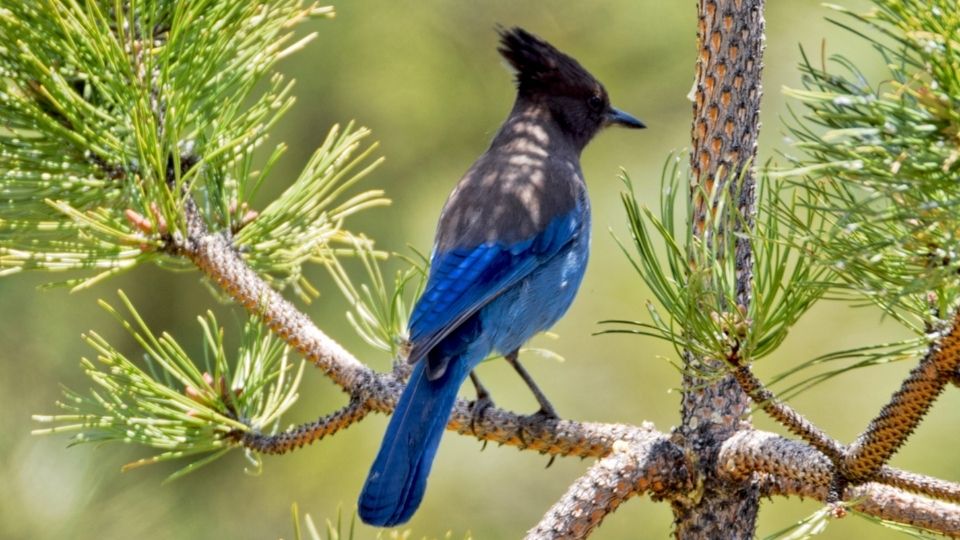The primary distinguishable feature of the Blue Jay and Steller's Jay is their white or black face and underbelly. Blue Jays have a white face and belly while Steller's Jays have a black face and underbelly. Another way to distinguish them is with their feathers. Blue Jay's have white or grey mixed in with the blue and black, while Steller's Jays are only blue and black.
These two birds also live on opposite sides of North America.
Steller’s Jays live in coniferous forests on the Pacific coast, primarily in California and the Rocky Mountains. In contrast, Blue Jays live in deciduous forests along the east coast and British Columbia.
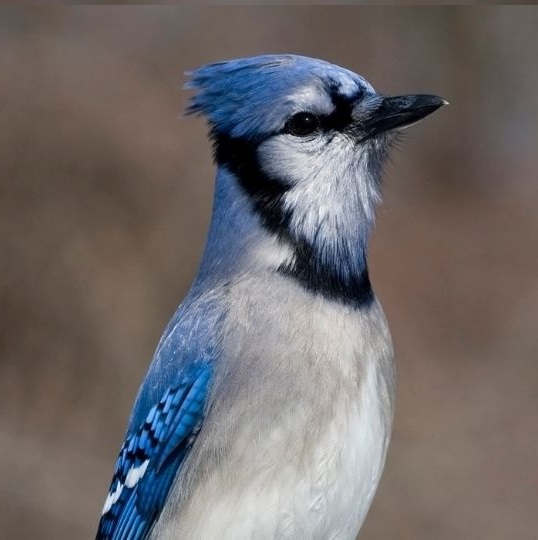
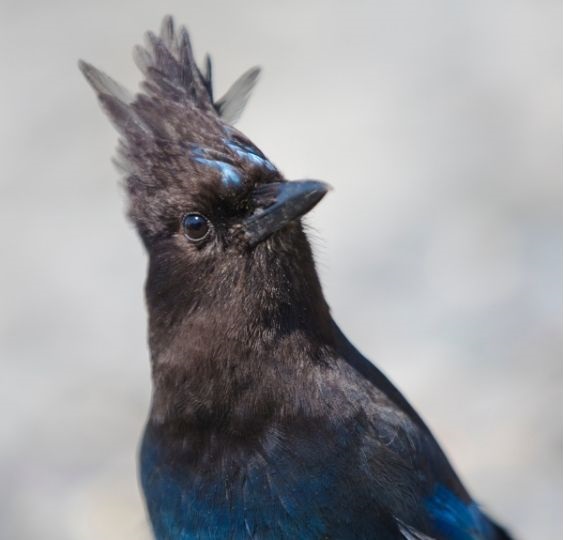
Differences in Crest
While these two birds have similar crests, the Steller’s Jay crest is more prominent.
The crest of a Steller’s Jay maintains its triangular black crest upwards at all times. The crest of a Steller’s Jay is black and stands up like a mohawk.
The Blue Jay has a similar crest, but it usually sits folded down against its head. When the Blue Jay becomes agitated, it fluffs its crest similarly to the Steller’s Jay.
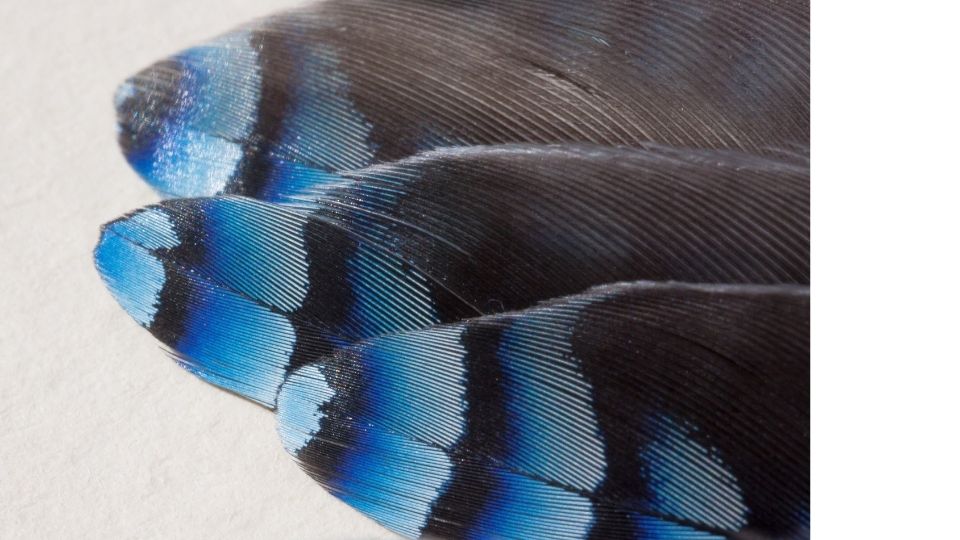
Differences in Plumage Colors
Another easy way to distinguish between a Steller’s Jay and a Blue Jay is the color of plumage feathers.
The color of plumage feathers on a Steller’s Jay is primarily cyan blue without any white feathers on the breast. The head of the Steller’s Jay is the biggest giveaway with black feathers, some even have an occasional horizontal strip of white above their eyes and vertical white stripes on the top of its face.
The Blue Jay, on the other hand, had more of a blue-purplish tone, a white-greyish breast, and an occasional black feather necklace.
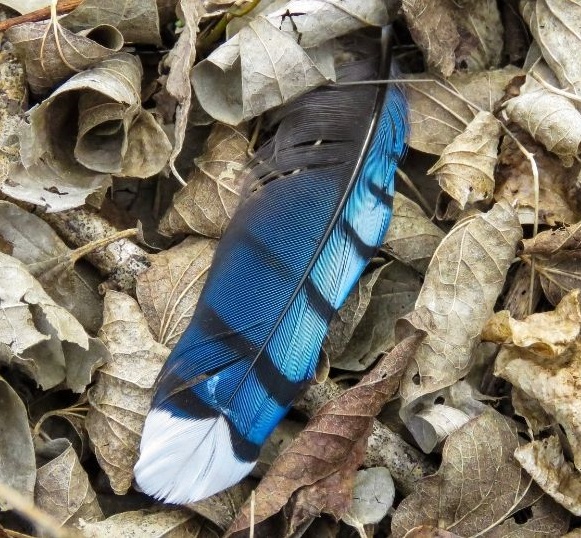
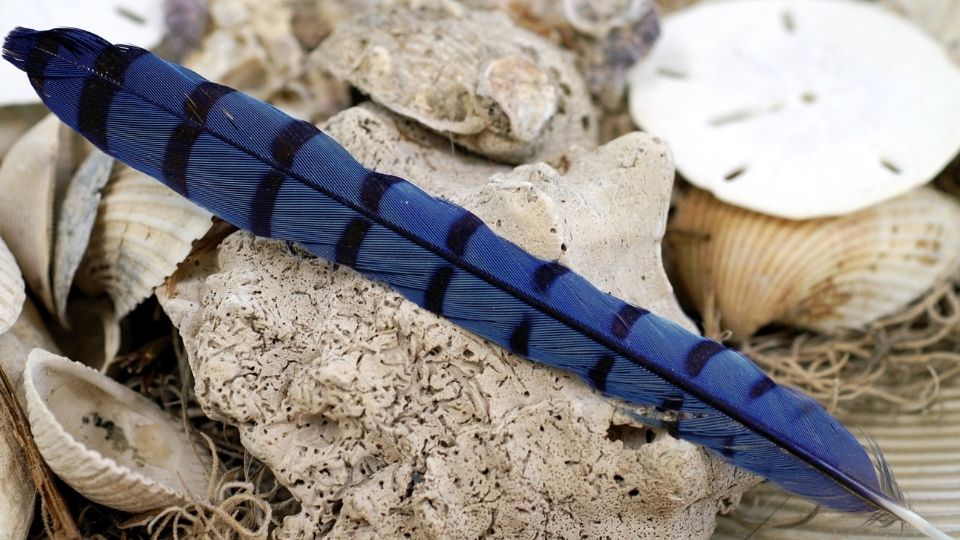
Differences in Tail Feathers
There are also subtle differences in the tail feathers.
Bird watchers can quickly identify these birds mid-flight by simply looking at the coloring of their tail feathers.
The Steller’s Jay tail feathers are completely blue, while the Blue Jay’s tail feathers are speckled with white, blue, and black.
Do Blue Jays and Stellar Jays have Different Habitats?
Yes, these two birds reside on entirely different coasts. Blue Jays live predominantly on the east coast and prefer mixed woodlands with pine-oak and beech trees (in America) and spruce and fir trees in southern Canada. Many Blue Jays will visit, dwell, and nest in residential areas around bird feeders.
They prefer to make nests of pine needles and munch on pine seeds in eastern America as far down as Florida.
On the other hand, Steller’s Jays prefer the Rocky Mountains of western North America.
The range of these songbirds spans from Alaska down through the Rocky Mountains and into some parts of Mexico.
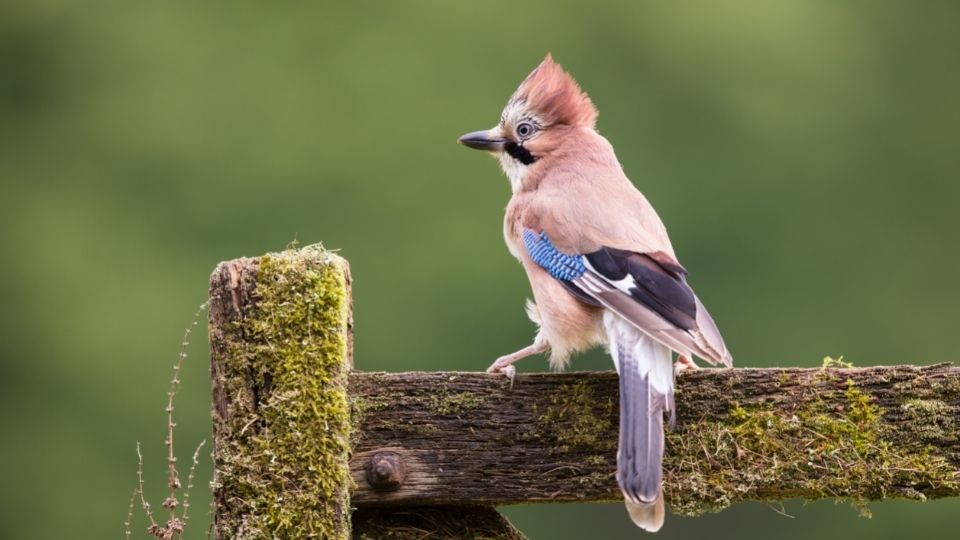
Are Blue Jays Really Blue?
Blue Jay’s aren’t actually blue. The melanin (or pigment) in their feathers is brown.
When we look at a blue jay, we perceive light scattering.
All of the colors are absorbed into the blue jay’s feathers, except for the color blue.
Blue Jays are only blue because our human eyes perceive them as blue.
In reality, blue jay are more brown and gray than bright blue.
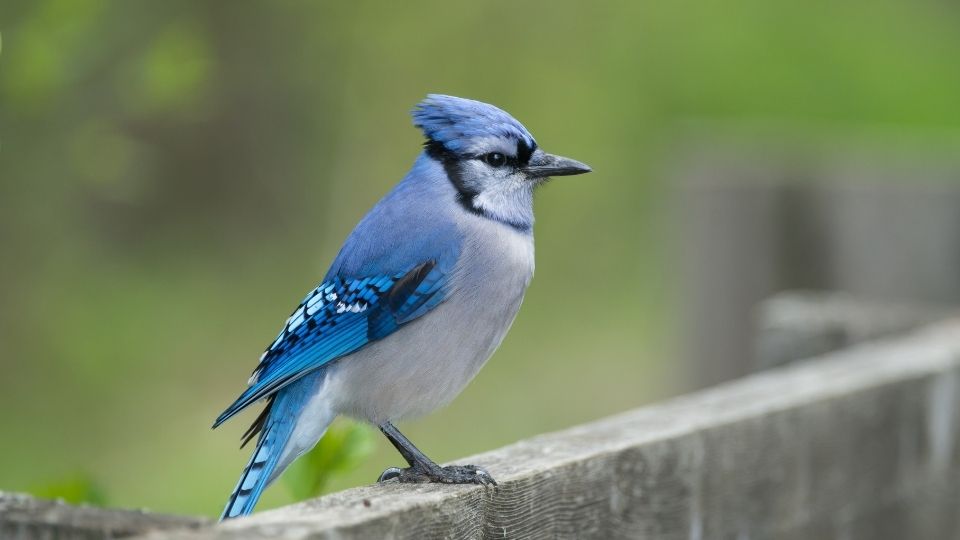
Are Blue Jays Rare?
Blue Jays are relatively common, but according to the North American Breeding Bird Survey, their populations are in a slight decline.
The reason for their slight decline over the years can be attributed to a few factors.
Deforestation removes some of their homes and food sources such as acorns of these North American birds.
Climate change has forced some of these songbirds to migrate (although not all migrate).
While in slight decline, it’s still not considered rare for birdwatchers to spot these birds around local bird feeders, picnic areas, and residential neighborhoods.
They are intelligent birds that adapt as best as they can.
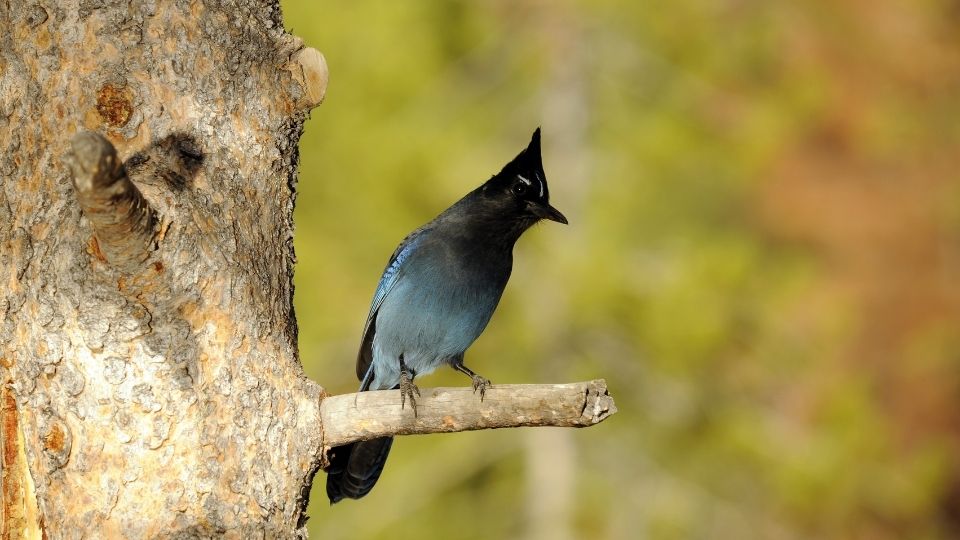
Are Steller’s Jay Songbirds Rare?
Steller’s Jays aren’t considered rare, but their populations are in subtle decline.
Much like the North American Blue Jay, their conservation status is declining due to deforestation and climate change.
They haven’t landed on the endangered species list due to their ability to adapt to their surroundings.
They make nests in residential areas along the Pacific ocean down into Nicaragua.
Stellar Jays get by eating suet at local bird feeders, bugs, and campground offerings; these omnivores have found a way to live with us.
Why is the Steller’s Jay Considered a Pest?
While their omnivore lifestyle serves more like pest control rather than a pest, some feel these birds are a bit of a nuisance.
The Steller’s Jay loves to hang out around campgrounds to steal food, and they can be pretty aggressive in their endeavors.
At backyard feeders, they are also very aggressive birds that often scare away more timid birds.
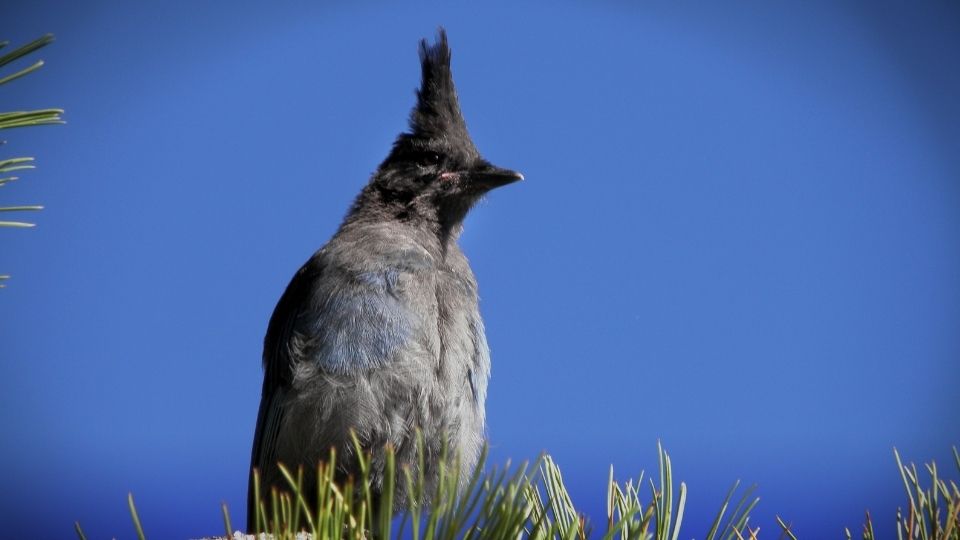
What is the Range of the Steller’s Jay?
The Steller’s Jay primarily lives from Alaska down to Central America along the Pacific coast.
They prefer dense forest locations where they can hide their bright feathers in the shadows and prefer higher elevations to stay safe.
Birdwatchers can catch a glimpse of this songbird if stationed in the western portion of the United States.
These birds of North America have done their best to survive in our ever-changing landscape and can stay, thanks to backyard feeders and sloppy campers!

